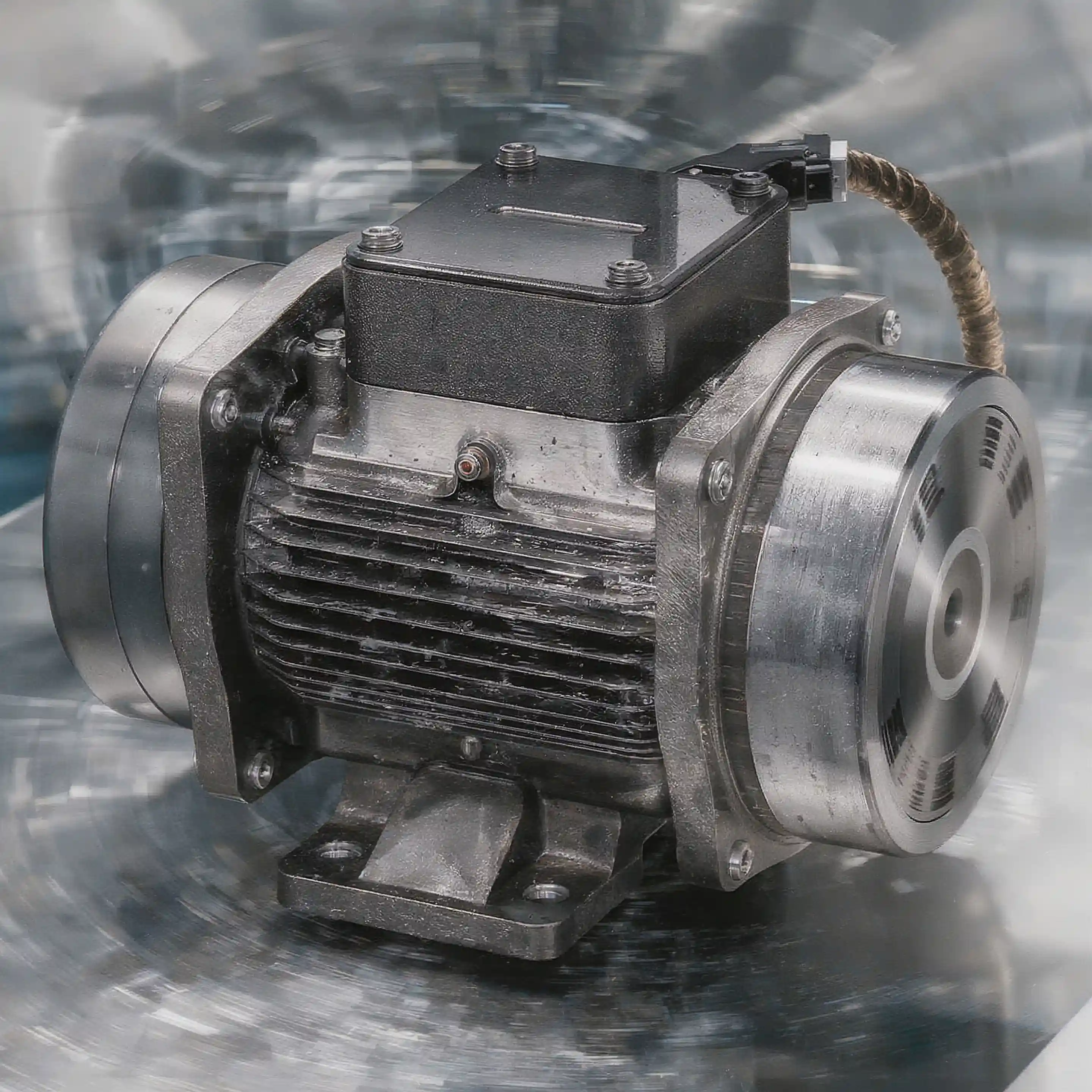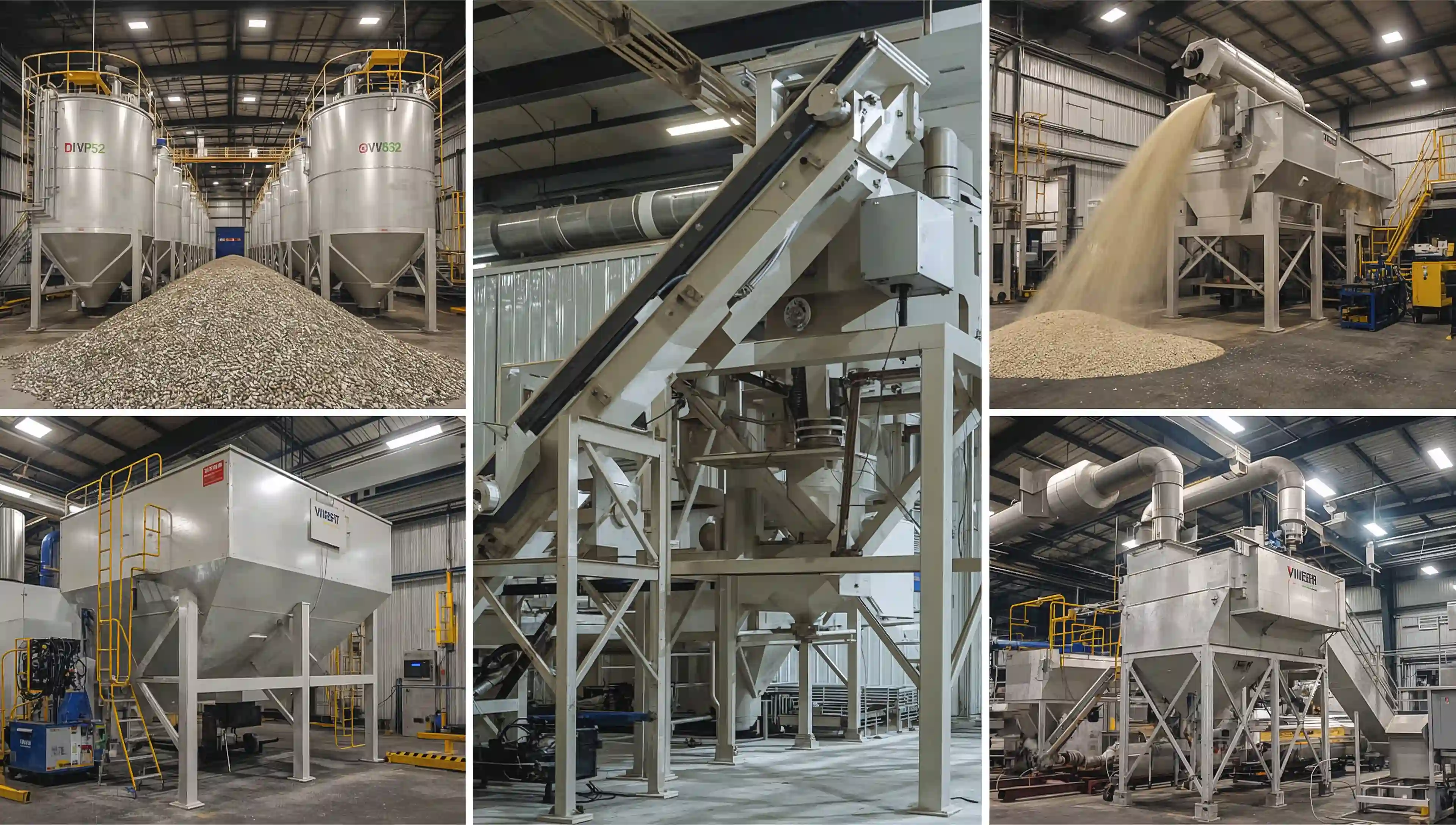0
Your cart is empty. Let's change that!
Shop our productsOops! Something went wrong while submitting the form.
.webp)
We have seen firsthand how industrial vibratory technology transforms the way industries handle bulk materials. With decades of experience designing and manufacturing vibratory equipment, we understand the principles and applications that drive efficiency, improve product quality, and increase throughput. In this article, we will share our expertise on the fundamentals of vibratory technology, with a special focus on linear vibration, which is our specialty, and how it is applied across real-world operations.
Industrial vibratory technology plays a crucial role in enhancing operational efficiency, vibration measurement, and product quality across various sectors. This article will explore the fundamental principles of industrial vibratory technology, including mechanical and electromagnetic vibrations, while focusing on the different types of vibratory motion, particularly linear vibration and its characteristics. Additionally, it will examine the application of industrial vibratory technology in bulk processing, conveying, mixing, and other functions, with a focus on diagnostic tools and techniques. The article will also highlight the advantages of collaborating with BPS to achieve higher throughput and improved results in these industrial processes.
At Best Process Solutions, we have extensive experience in industrial vibratory technology, predictive maintenance systems, and analysis tools across various sectors, including manufacturing, construction, and healthcare.
Our primary focus is on enhancing operational efficiency through vibration analysis, monitoring tools, and predictive maintenance systems. We utilize advanced sensors, analysis equipment, and other tools that comply with ISO standards and requirements to ensure that machinery operates at its optimal performance.
In our applications, we prioritize safety, energy efficiency, structural integrity, and overall well-being.

The fundamental principles of industrial vibratory technology involve understanding the mechanics of vibrations, diagnostic techniques, and their effects on machinery. These vibrations can be classified into two main types: mechanical and electromagnetic vibrations, each having unique parameters and behaviors.
To optimize equipment performance and ensure long-lasting operational integrity across various applications, analytical techniques such as frequency and amplitude are employed, along with the use of advanced diagnostics and analysis software.
Mechanical vibration refers to the repetitive motion of equipment parts, which can have detrimental effects on operational efficiency and lifespan if not properly managed. Proper analysis and monitoring are crucial for identifying the root cause of these vibrations. Understanding the sources of mechanical vibrations is essential for ensuring that equipment meets the required performance and reliability standards across various industrial settings, and for implementing effective maintenance strategies.
Mechanical vibrations can originate from multiple sources, each contributing to oscillatory motion in different ways. Common sources of mechanical vibrations include:
The effects of mechanical vibrations on equipment and machinery can be severe. Often, vibrations go undetected until they cause issues such as:
Incorporating diagnostics through advanced sensor technologies enables the monitoring of vibration parameters, allowing maintenance strategies to be adjusted based on real data. This proactive management approach can reduce risk, extend equipment life, and enhance operational performance.
Electromagnetic vibration, created by the interaction of electric and magnetic fields, significantly impacts various industrial systems and can lead to structural changes.
To fully understand its effects on performance, specialized analysis is essential. This phenomenon plays a critical role in the efficiency and safety of numerous applications, ranging from manufacturing machinery to power generation equipment. If not monitored effectively, these vibrations can lead to significant issues.
In this context, energy systems and sensors become essential tools, providing real-time data that enables engineers to diagnose problems before they escalate, thus preserving system health and performance.
Through precise measurement and analysis, strategies can be implemented to mitigate the risks associated with vibration. Understanding frequency patterns is crucial for identifying systemic faults, while real-time monitoring helps reduce downtime and maintenance costs. Additionally, integrating advanced sensors ensures the early detection of anomalies.
By prioritizing this analysis, industries can enhance their operational stability and prevent costly disruptions.
The various types of vibratory motion are crucial for industries that utilize vibration equipment, as each type—linear, circular, and elliptical—has unique characteristics suitable for different applications.
Linear vibration, which is our area of expertise, is particularly effective for efficient conveying and feeding operations. In contrast, circular and elliptical vibrations are employed for specific separation and compaction processes.
Linear vibration is a specialized form of vibratory motion utilized for conveying and feeding applications, playing a key role in maintaining operational efficiency.
This mode of vibration is employed to move bulk materials and is essential in various industrial settings where a consistent flow rate is necessary and material congestion must be minimized.
Linear vibration systems are frequently used in feeding, screening, and sorting applications across many industries, ensuring consistency and reducing displacement issues.
They are designed to operate with minimal energy while maximizing efficiency. Utilizing such specialized equipment significantly enhances operational performance.
Consequently, linear vibrational mechanisms positively impact operational efficiency, thereby improving the overall effectiveness of bulk material handling systems.
Circular vibration is utilized in compaction and separation applications due to its effective and advantageous nature, offering unique system responses and performance benefits.
Unlike linear vibration, circular vibration provides a more uniform and efficient distribution of energy across materials, making it valuable in various industrial contexts.
In manufacturing, circular vibration enhances screening efficiency by allowing smaller particles to pass through while keeping larger ones on the surface. In construction, it aids in compacting concrete, resulting in a denser and stronger final product.
Additionally, circular vibration reduces wear and tear on machinery, leading to a longer operational lifespan and lower costs. By employing circular vibration, industries can gain a competitive advantage through increased productivity and improved quality in their end products.
While we specialize in linear vibration, circular motion feeders are sometimes used in separation or compaction. See our full comparison of linear vs. circular feeders.
Elliptical vibration is the least common type of vibration in my work, but it is employed in specific industrial applications where its unique motion can enhance machine efficiency and effectiveness. This type of vibration generates a motion that is fundamentally different from both linear and circular vibrations, creating a dynamic interplay between forces that can yield improved results for various machine functions.
Elliptical vibration is used in industrial applications to help achieve several key goals:
Ultimately, industries that leverage this technology not only enhance operational functions but also promote overall sustainability through reduced resource consumption.

Vibratory technology is employed in various real-world operations, including bulk processing, conveying, feeding, compaction, and separation. Its application in these processes enhances both efficiency and product quality within the industrial sector.
Bulk processing is a fundamental application of vibratory technology, and its proper implementation is essential for achieving success in these operations. The use of vibratory machinery provides significant advantages across various industries, notably by enhancing workflow and productivity.
Among the diverse applications, the use of vibratory feeders, conveyors, and screens enables manufacturers to significantly reduce processing time, acceleration, and the necessary manpower. The benefits of this processing technology, tested and verified, can be summarized as follows:
The positive impact on operational efficiency highlights how strategically utilizing vibratory solutions can lead to substantial long-term savings and competitive advantages in the marketplace.
In mining, for example, our heavy-duty vibratory equipment has been proven to increase ore throughput.
Vibratory systems are essential components in conveying applications, providing reliable and efficient material handling solutions that maximize throughput while minimizing downtime.
These systems facilitate the rapid transportation of materials, provide valuable insights, and enhance operational productivity by ensuring seamless transitions between processes, thereby reducing the likelihood of bottlenecks. The use of vibratory feeders, conveyors, and shakers allows for the safe and efficient transportation of various materials, whether bulk or fragile.
Additionally, these systems offer improved durability, resulting in longer-lasting equipment and lower maintenance costs. They can be customized to meet specific handling needs, enhancing operational flexibility and adapting to Industry 4.0 standards.
Furthermore, the integration of vibratory systems conserves energy, leading to significant savings over time.
Vibratory feeders play a crucial role in maintaining consistent material flow within production processes, thereby enhancing both efficiency and effectiveness. For production systems to operate at optimal levels, material flow must be controlled and consistent, a requirement fulfilled by these feeding systems. Vibratory technology is particularly beneficial in automating the handling of various materials, especially in sectors such as food processing, pharmaceutical manufacturing, and industrial production.
These feeding systems regulate the amount of material delivered and the speed of delivery, which minimizes waste and facilitates continuous operation. As production demands increase, the utility of vibratory feeding systems becomes even more pronounced. They effectively supply materials to machines responsible for processing or packaging in manufacturing, assembly lines, and similar environments.
Here are three ways in which vibratory feeding systems contribute to the automation of material handling in production processes:
The implementation of feeding systems using vibratory technology and accelerometers ultimately leads to increased productivity and a more streamlined production process.
Vibratory technology significantly enhances compaction processes by improving the density and stability of materials across various applications. This innovative approach uses mechanical vibrations to effectively rearrange particles within soil or aggregates, resulting in superior compaction outcomes.
In construction, the benefits of using vibratory equipment are evident in both productivity and the uniformity of the compacted surface. Unlike traditional methods, which may lead to inconsistent density that can compromise structural integrity, vibratory technology ensures optimal density is achieved with minimal effort.
The efficiency of vibratory compaction allows for swift material compaction, assessing severity, thereby reducing project timelines. Additionally, machinery such as vibratory rollers enhances operator control and adaptability across different terrains. This increased operational efficiency can also significantly lower overall project costs. By leveraging these advantages, contractors can meet stringent engineering standards while maximizing the longevity and stability of their projects.
The choice between flat deck and grid deck tables plays a major role in compaction performance. We’ve compared both designs in our recent blog article here.
Vibratory systems are employed in separation applications to sort and classify materials based on size, weight, or other parameters, thereby enhancing operational efficiency. These systems use vibratory technology to create controlled signals and movements that help guide materials to their designated endpoints.
By utilizing various frequencies and amplitudes and considering ISO conditions, they can accommodate a wide range of materials, ensuring accurate separation. This process not only reduces waste but also increases output, improves classification accuracy, and minimizes operational downtime while enhancing material recovery rates.
The effectiveness of vibratory systems has revolutionized material processing across industries, from mining to recycling, making them critical for efficient separation.
Vibratory technology enhances efficiency in our systems by optimizing machinery operations, improving performance, and offering valuable insights through essential diagnostic and monitoring tools.
Vibratory technology enhances product quality by ensuring consistent handling of materials, improving operational efficiency, and reducing defects across various applications.
Vibratory technology enhances throughput in industrial processes.
Partnering with Best Process Solutions offers numerous benefits, including advanced unit management, including our expertise in vibratory technology and the efficiency of our solutions.
Here are some common questions. Please contact us if you have a question we didn't answer.
Industrial vibratory technology involves the use of mechanical or electromagnetic vibrations to move, convey, compact, or separate materials in bulk processing. It is important because it improves efficiency, product quality, and throughput, making it an essential tool in many industries.
The core principles of industrial vibratory technology are vibration, resonance, and amplitude. These principles work together to create the necessary forces and movements to handle bulk materials effectively and efficiently.
There are two main types of vibration used in industrial vibratory technology: mechanical and electromagnetic. Mechanical vibration is generated by motors or eccentric weights, while electromagnetic vibration is created by electromagnets and alternating currents.
Industrial vibratory technology is used in a variety of applications, including bulk processing, conveying, feeding, compaction, and separation. It is commonly utilized in industries such as food and beverage, pharmaceuticals, mining, and recycling.